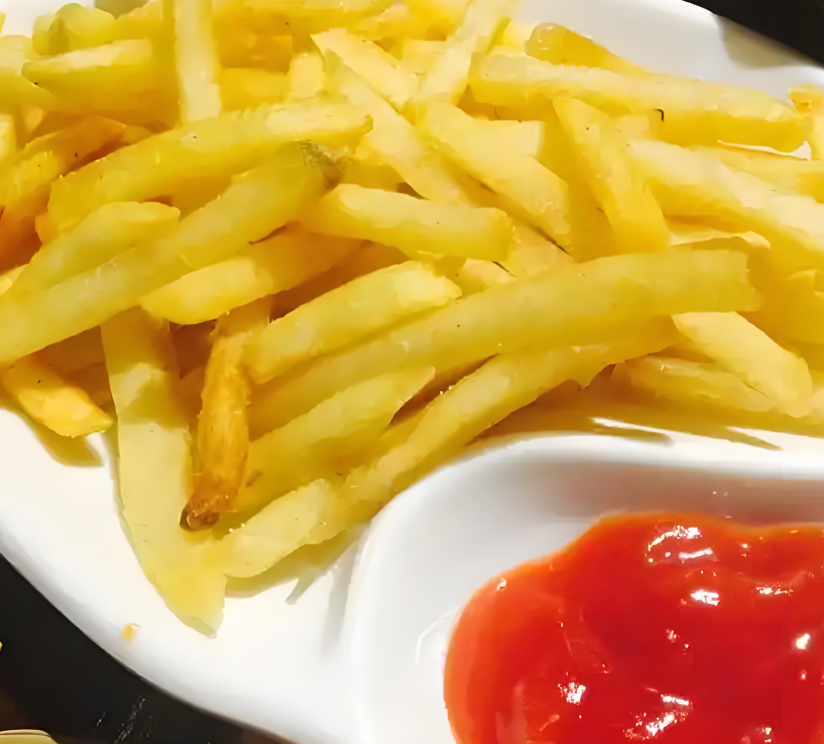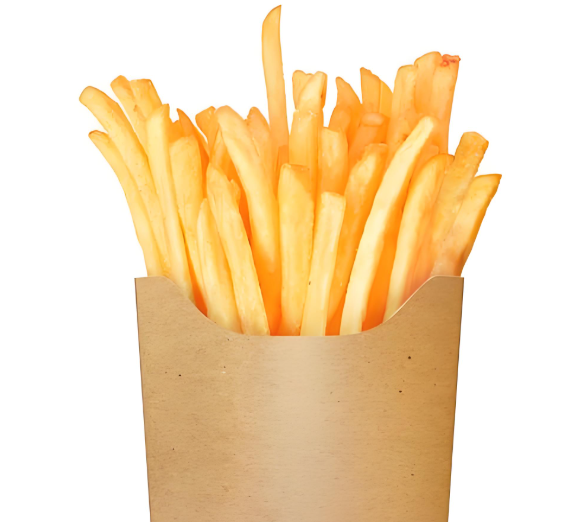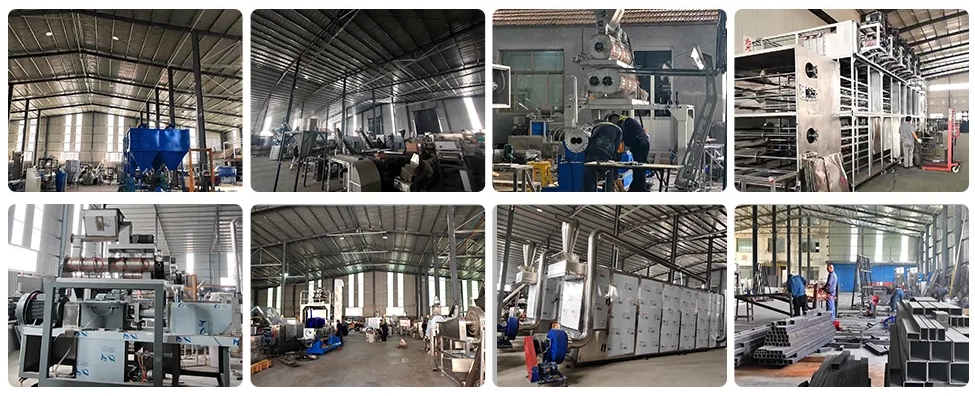Introduction: The Global Phenomenon of a Simple Potato Stick
The French fry is a ubiquitous global commodity, a staple of fast-food menus, home kitchens, and gastropubs alike. Its appeal lies in a seemingly simple combination: a soft, fluffy interior encased in a crisp, golden-brown exterior. However, achieving this perfect texture on an industrial scale, consistently and efficiently, is a feat of modern food engineering that belies the fry’s humble appearance. The journey from a raw, underground tuber to a uniformly perfect, shelf-stable frozen fry is a complex process involving precise agricultural science, sophisticated mechanical handling, and carefully controlled thermal processing.French fries production line

This article delves deep into the world of industrial French fry production, unlocking the secrets behind each stage of manufacturing. It is a process designed to maximize yield, ensure consistent quality, and guarantee safety. We will explore the entire pipeline, from the selection of the specific potato bred for frying to the final freezing and packaging of the product. This exploration is structured around eight critical stages of production: 1) Potato Selection and Cultivation: The Foundation of Quality; 2) Receiving, Storage, and Initial Handling; 3) Peeling, Washing, and Inspection: Preparing the Tuber; 4) The Cutting and Sizing Operation: Creating the Fry; 5) The Blanching Process: The Most Critical Step; 6) Drying and Pre-Frying (Par-Frying); 7) Freezing for Stability; and 8) Final Packaging and Quality Assurance.French fries production line
Stage 1: Potato Selection and Cultivation: The Foundation of Quality
Not all potatoes are created equal, especially when it comes to frying. The choice of potato variety is the single most important factor determining the final quality of the fry. Industrial producers do not use generic table potatoes; they rely on specific cultivars bred for high solids content and low sugar levels.
1.1 The Ideal Fry Potato: Key Characteristics
The perfect French fry potato possesses a very specific chemical and physical profile:

- High Specific Gravity / Solids Content: This is the paramount characteristic. Specific gravity measures the density of the potato relative to water. A potato with high solids (typically above 1.080 specific gravity) has more dry matter (starch) and less water. During frying, the water evaporates, leaving behind the cooked starch structure. A high-solid potato will result in a fluffy, mealy interior with less oil absorption and less sogginess. A low-solid potato will shrink dramatically, become oily, and have a soggy, undesirable texture. Varieties like Russet Burbank, Ranger Russet, and Shepody are industry standards in North America for this reason.
- Low Reducing Sugar Content: Sugars are the enemy of a golden fry. When exposed to the high heat of frying, sugars undergo a chemical reaction with amino acids called the Maillard Reaction, which produces brown color and desirable flavors. However, if the sugar content is too high, the fry will turn unacceptably dark brown or even black. Potatoes are living organisms, and their sugar content fluctuates, especially when stored at cold temperatures. Managing this through controlled storage (see Stage 2) is crucial.French fries production line
- Long, Oval Shape: An elongated, uniform shape is preferred for efficiency. It allows for the maximum yield of long, appealing fry strips with minimal waste from irregular ends.
- Shallow Eyes: Deep eyes (indentations) lead to greater waste during peeling and can create imperfections in the final fry strip.
1.2 Contract Farming and Agricultural Management
Major French fry manufacturers do not typically buy potatoes on the open market. They operate through a system of contract farming. The company provides farmers with specific seed stock of the desired variety and sets strict agricultural guidelines for irrigation, fertilization, and pest control. This ensures a consistent and reliable supply of potatoes that meet their exacting quality specifications. Harvesting is timed precisely to ensure the potatoes have reached optimal maturity.French fries production line
Stage 2: Receiving, Storage, and Initial Handling
Once harvested, potatoes are transported to the processing plant. The handling from this point forward is designed to maintain quality and begin the preparation process.

2.1 Receiving and Grading
Trucks dump potatoes into a receiving hopper, often using water flumes to transport them gently into the facility, minimizing bruising. The potatoes are then mechanically graded. They pass over sizing screens to sort them for different product lines (long fries vs. shorter cuts). They are also inspected for defects like greening (which indicates the presence of solanine, a mild toxin), rot, and major deformities.
2.2 The Science of Potato Storage
Potatoes are not processed immediately year-round; they are harvested over a short period and stored for up to 10-12 months to supply the plant continuously. The storage facilities are not simple warehouses; they are highly controlled environments.French fries production line
- Control de temperatura: The storage temperature is carefully managed based on the potato’s sugar content. To prevent the accumulation of reducing sugars, potatoes are often “conditioned” at temperatures around 8-10°C (46-50°F). If sugars have built up (e.g., from cold storage), they can be “reconditioned” by storing at warmer temperatures (around 15-20°C or 59-68°F) for several weeks, allowing the sugars to be metabolized back into starch.
- Humidity and Ventilation: High humidity (90-95%) is maintained to prevent moisture loss and shriveling. Proper ventilation ensures uniform temperature and removes carbon dioxide and heat produced by the respiring tubers.
Stage 3: Peeling, Washing, and Inspection: Preparing the Tuber
The first steps inside the processing plant itself involve removing the skin and ensuring the potatoes are clean and sound.
3.1 Abrasive or Steam Peeling
There are two primary industrial peeling methods:
- Abrasive Peeling: Potatoes are tumbled in a drum lined with abrasive rollers or surfaces. This physically scrubs the skin off. It is effective but can lead to higher product loss (“yield loss”).
- Steam Peeling (The Modern Standard): Potatoes are subjected to high-pressure steam for a brief period (20-30 seconds). The steam cooks a thin layer of tissue just beneath the skin. When the pressure is rapidly released, the steam under the skin expands, causing it to burst and loosen. The potatoes then pass through rubber rollers or high-pressure water sprays that easily rub the softened skin away. Steam peeling is more efficient, offers higher yields, and produces a cleaner, more uniform surface.French fries production line
3.2 Washing and Final Inspection
After peeling, the potatoes are thoroughly washed with high-pressure jets of water to remove any remaining peel or debris. They then proceed to a final inspection belt. Human inspectors or advanced optical sorting machines remove any potatoes with residual defects—bruises, blemishes, or remnants of peel—that were missed in the initial grading.
Stage 4: The Cutting and Sizing Operation: Creating the Fry
The smooth, peeled potatoes are now ready to be transformed into the familiar fry shape.
4.1 The Cutting Process
Potatoes are fed into a hydrocutting system. This is a critical piece of equipment that uses a high-pressure water jet to force the potatoes through a grid of sharp blades. Unlike mechanical knives, which can be dulled by the starch and cause ragged edges, hydrocutting creates clean, smooth cuts. This smooth surface is essential for a uniform appearance and consistent frying.
- Blade Grids: Different blade grids are used to produce various cuts: classic ¼” x ¼” strips, thinner “shoestring” fries, thicker “steak-cut” fries, or even crinkle-cut blades.
4.2 Trimming and Sorting
The cut fries emerge in a mixture of full-length strips and shorter pieces. They are conveyed over shaker screens where the shorter pieces (which will become “short fries” or go into products like hash browns) are separated from the long, premium strips. Another round of inspection, often with optical sorters, removes any strips with skin or defects.French fries production line
Stage 5: The Blanching Process: The Most Critical Step
Blanching is arguably the most important and scientifically nuanced step in the entire process. It is a heat treatment in hot water or steam, and its objectives are multifaceted.

5.1 The Key Objectives of Blanching:
- Enzyme Inactivation: Raw potatoes contain enzymes like polyphenol oxidase (PPO), which cause enzymatic browning when the potato cells are damaged (cutting exposes them to air). Blanching denatures these enzymes, preventing the fries from turning an unappetizing gray or brown before frying.
- Removal of Surface Sugars: The hot water leaches out excess reducing sugars from the surface of the fry. This is a crucial control point for achieving the perfect golden color during frying. Without blanching, the high sugar concentration on the surface would lead to excessive browning.
- Partial Gelatinization of Starch: The heat and moisture begin to cook the starch near the surface of the fry. The starch granules swell and gelatinize, forming a gel. This initial cooking step is vital for developing the final texture—it helps create a barrier that will reduce oil absorption during frying and contributes to the soft interior.
- Preheating the Core: Blanching brings the entire fry to a consistent temperature, ensuring more uniform cooking during the subsequent frying step, which is very brief.
5.2 Blanching Parameters
Blanching is typically a multi-stage process, with temperatures ranging from 70°C to 90°C (158°F to 194°F) and durations from a few minutes to over 15 minutes, depending on the fry thickness. The exact time and temperature are carefully calibrated recipes that processors guard closely.French fries production line
Stage 6: Drying and Pre-Frying (Par-Frying)
After blanching, the fries are saturated with surface moisture. Frying a wet product is dangerous (causes oil splatter) and inefficient (energy is wasted boiling off water instead of cooking the fry).
6.1 Dewatering and Air Drying
The fries pass through a centrifugal dryer—a large, spinning drum lined with a screen, much like a giant salad spinner. This removes the majority of the free water. They may then pass through a tunnel with hot air blowers to ensure the surface is completely dry. A bone-dry surface is essential for the formation of a crisp crust during frying.French fries production line
6.2 Par-Frying: The First Fry
The dried, blanched fries are now conveyed through a continuous fryer filled with hot oil (typically a stable, neutral-flavored oil like high-oleic sunflower oil or a blend). The oil temperature is usually between 175°C and 190°C (347°F to 374°F). The residence time in the fryer is short, typically 45 to 60 seconds.
- Propósito: This “par-frying” or “pre-frying” step is not intended to cook the fry completely. Its goals are:
- Crust Formation: The intense heat instantly vaporizes the remaining surface moisture, creating a porous, crisp, and sealed outer layer.
- Color and Flavor Development: The Maillard reaction occurs, giving the fry its initial golden color and characteristic fried flavor.
- Partial Cooking: The interior of the fry continues to cook via steam, becoming softer.
- Oil Uptake: A small amount of oil is absorbed, which contributes to flavor and mouthfeel. The sealed crust formed during this stage actually helps to limit excessive oil absorption during the final fry by the consumer.
Stage 7: Freezing for Stability
The par-fried fries are now 80-90% cooked but are still perishable. To achieve a long shelf life, they are immediately frozen.
7.1 Individual Quick Freezing (IQF)
The fries are conveyed into a spiral freezer or a fluidized bed freezer. In a spiral freezer, they move on a conveyor belt that winds up and down through a chamber where cold air (e.g., -30°C to -40°C / -22°F to -40°F) is blown over them. In a fluidized bed, cold air is blown upwards with enough force to suspend the fries, freezing them individually as they travel along. The IQF process is critical because it freezes each fry separately, preventing them from clumping together into a solid block in the final package. This allows the end-user to pour out exactly the amount needed.French fries production line
7.2 The Importance of Freezing Speed
Rapid freezing is key to preserving quality. It creates tiny ice crystals that do less damage to the potato’s cell structure. Slow freezing creates large ice crystals that puncture cell walls, leading to a mushy texture upon thawing and frying.
Stage 8: Final Packaging and Quality Assurance
The frozen fries are now ready for the final steps before shipment.
8.1 Weighing and Packaging
The IQF fries are conveyed to automated packaging lines. They are weighed and dispensed into bags—either retail-sized packages for supermarkets or large, bulk bags for food service. The packaging material is a multi-layer plastic film that provides a barrier against oxygen and moisture to prevent freezer burn and oxidative rancidity of the absorbed oil.
8.2 Rigorous Quality Assurance
Throughout the entire process, quality control is relentless. QC technicians constantly test for:
- Raw Potatoes: Specific gravity and sugar content.
- Blanched Fries: Moisture content and color.
- Par-Fried Fries: Color (using colorimeters), texture, moisture content, and oil content.
- Finished Frozen Product: Sensory evaluation (frying samples according to a strict protocol), check for defects, and verify weight.
The industrial production of French fries is a masterpiece of food technology. It is a process that transforms a highly variable, perishable agricultural product into a standardized, convenient, and consistent food item with a long shelf life. Every step, from the genetic selection of the potato to the speed of freezing, is meticulously controlled by science and engineering. The next time you enjoy a crisp, golden French fry, remember the incredible journey it has undertaken—a journey that represents the complex and fascinating alchemy of modern food production. This process ensures that whether in Tokyo, Toronto, or Buenos Aires, the experience of a perfect fry is remarkably consistent, a testament to the precision embedded in its creation.







